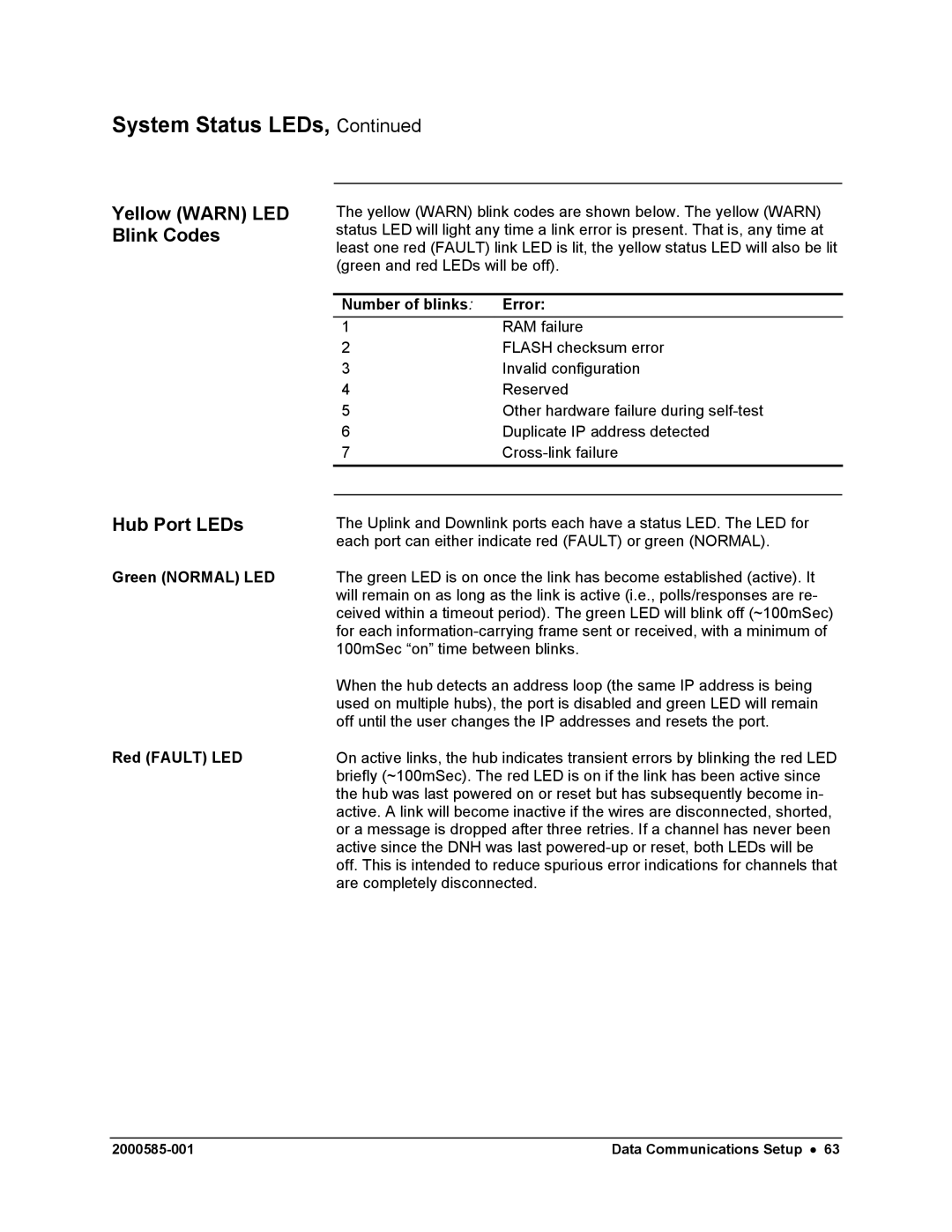System Status LEDs,
Yellow (WARN) LED Blink Codes
Continued
The yellow (WARN) blink codes are shown below. The yellow (WARN) status LED will light any time a link error is present. That is, any time at least one red (FAULT) link LED is lit, the yellow status LED will also be lit (green and red LEDs will be off).
Number of blinks: | Error: |
1 | RAM failure |
2 | FLASH checksum error |
3 | Invalid configuration |
4 | Reserved |
5 | Other hardware failure during |
6 | Duplicate IP address detected |
7 | |
|
|
Hub Port LEDs | The Uplink and Downlink ports each have a status LED. The LED for |
| each port can either indicate red (FAULT) or green (NORMAL). |
Green (NORMAL) LED | The green LED is on once the link has become established (active). It |
| will remain on as long as the link is active (i.e., polls/responses are re- |
| ceived within a timeout period). The green LED will blink off (~100mSec) |
| for each |
| 100mSec “on” time between blinks. |
| When the hub detects an address loop (the same IP address is being |
| used on multiple hubs), the port is disabled and green LED will remain |
| off until the user changes the IP addresses and resets the port. |
Red (FAULT) LED | On active links, the hub indicates transient errors by blinking the red LED |
| briefly (~100mSec). The red LED is on if the link has been active since |
| the hub was last powered on or reset but has subsequently become in- |
| active. A link will become inactive if the wires are disconnected, shorted, |
| or a message is dropped after three retries. If a channel has never been |
| active since the DNH was last |
| off. This is intended to reduce spurious error indications for channels that |
| are completely disconnected. |
Data Communications Setup • 63 |
